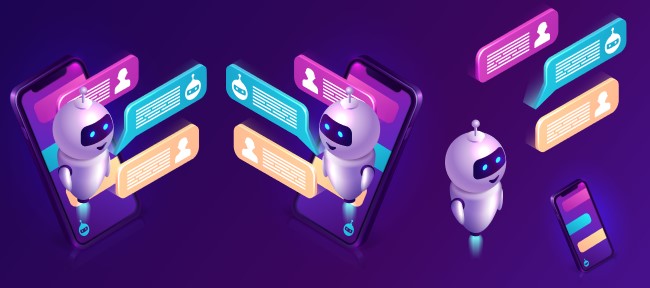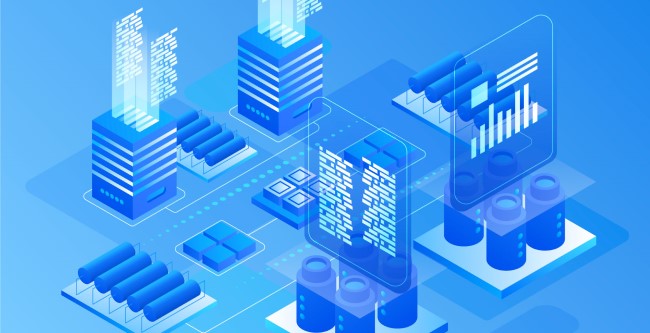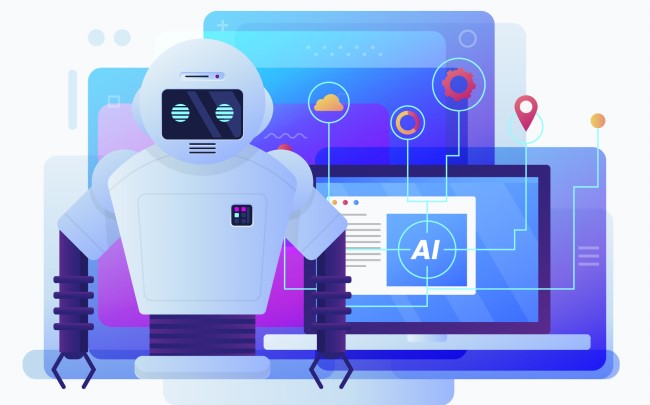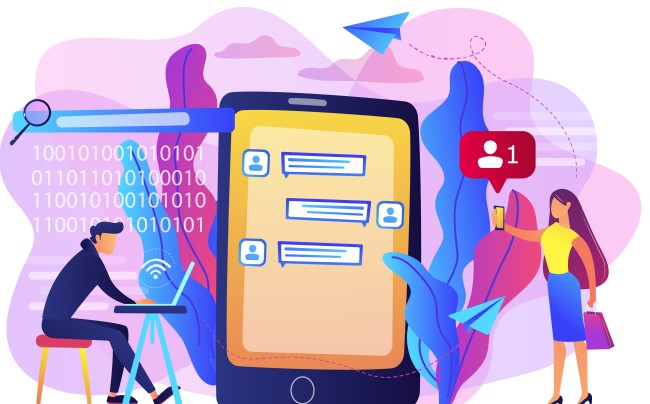What is Transformers Chatbot & How to Create
Chatbot technology is rapidly expanding, and so are the forms of AI that make chatbots. In the last year, our understanding of the capabilities of chatbots has completely changed with the emergence of ChatGPT and the use of transformer models for AI. But what is a transformer chatbot?
- Part 1 : Quick View: What is a Transformers and its Function in Chatbots
- Part 2 : Transformers Chatbot vs. Other Types of Chatbots
- Part 3 : How to Create a Transformers Chatbot?
- Part 4 : Benefits of Using Transformers Chatbots in Different Applications
- Part 5 : Challenges and Limitations of Transformers Chatbots
Quick View: What is a Transformers and its Function in Chatbots
To best understand what a transformers chatbot is, we can think of chatbot AI like a human brain. If we think of chatbots as having a brain, we can think of their technology as parts of the brain, similar to the frontal lobe or the amygdala.
The transformer is a part of the brain of the chatbot, combined with other technologies and programming that form how chatbots talk, learn, and interact with humans. Transformer models help AI bots to learn context, track information, and remember things like a human would. They can translate text, images, speech, and more in combination with data sources and chatbots.
Transformers are an architecture of programming that is a form of neural network that works in a stack of inputs and outputs. There are many types of transformers, and many AI bots have different forms of transformers from one another. This concept is relatively new, with the phrase “transformer model” coined in 2017 by Google.
As for the latest AI product - ChatGPT, it's a transformers chatbot. Think that you have a idea of what is transformer AI bot now.

Transformers Chatbot vs. Other Types of Chatbots
Transformers chatbots differ from rule-based chatbots, retrieval-based chatbots, and generative AI chatbots. Instead of using either rulesets or machine learning alone, transformers chatbots use data and libraries to translate information and assist the chatbot they are a part of. Let’s review the other types of chatbots, how they work, and what their capabilities are.
Chatbot Types
- Rule-based chatbots, also known as decision tree bots, work similarly to their name. They use chatbot software that has a set of rules, almost like a choose-your-own-adventure bot. These bots are used for many purposes. These bots have the ability to identify keywords in the input text and then, based on the keywords, follow the rules and respond accordingly. All answers that a rule-based chatbot will provide a user with are pre-written and predefined.
Write what you want - Retrieval-based chatbots are most similar to rule-based chatbots. They are bots that also use keyword matching but can also use machine learning to help decide which predefined response fits the situation best. Like rule-based chatbots, a retrieval-based chatbot will only ever provide a predefined response to a user.
Write what you want - Generative AI chatbots are what people think of when they think of AI bots. These chatbots are intelligent and use technology to mimic human interactions. These bots provide a conversational experience with their users by using machine learning and natural language processing. These bots, as their name suggests, learn from their experiences and the input given and then generate a response.
Write what you want
Features | Transformers | Rule-based | Retrieval-based | Generative AI |
|---|---|---|---|---|
| Natural Language Understanding (NLU) Ability | Expands on NLU by providing a “memory” for the chatbot. Understands slang, etc. | Has difficulty responding to queries that do not use keywords that help them follow their ruleset. | Can use NLU to understand the query and pick the most appropriate predefined response. | Uses NLU to handle complex queries, slang, misspellings, and ambiguous language. |
| Contextual Understanding Ability | Remembers past conversations and understands the links between information. | Uses the context of keywords from the input given by a user. | Uses the context of keywords from the input given by a user or uses machine learning to understand more. | Learns from other pieces of information and produces new information. |
| Training Data Requirements | Need high-quality data to work. | Can use set keywords to follow the rules. | Requirements according to the rules. | Need high-quality data to work. |
| Development Complexity | Are complex to set up, deep, multi-layered pieces of information. | Most simple to set up out of the four. | Moderate. Can simply work on keywords or use machine learning. | They are complex to set up. Requires machine learning and NLP. |
How to Create a Transformers Chatbot?
When trying to create a chatbot using transformer technology, there are several steps that you must take. Transformers chatbots must be coded to perform their functions and combine with other aspects of the chatbot in order to work. Simply setting up a transformers model segment is not enough to make a chatbot perform transformer functions.
Additionally, there are multiple components needed to make a chatbot with a transformer. These components must be coded and built to work together to use data, translate, and pair with a chatbot's machine learning and natural language processing in order to create outputs. Let’s review a list of things you will need before you get started.
A Checklist of Things Needed to Create a Chatbot with Transformer
● IDE (Integrated Development Environment)
According to Amazon, an IDE, or integrated development environment, is “a software application that helps programmers develop software code efficiently.” These environments are locations in which people can code and test their code. They can include tools that help edit the code or sort the code in folders as well. Examples of popular IDEs include Sublime Text, Visual Studio, and PyCharm.
● Deep Learning Framework
Deep learning frameworks, also known as DL frameworks, are frameworks that help to design deep neural networks. They also offer the ability to train and validate deep neural networks. DL is also considered a part of machine learning, as they are frameworks for building new deep learning models.
● Pre-trained Transformer Models, such as GPT-3 or BERT
Another way that you can create a chatbot with a transformer is to use a pre-trained model with a transformer. Two great options for pre-trained transformer models are GPT-3 and BERT, which can be added to your chatbot.
● Dataset to Train Model
Additionally, to build a chatbot with a transformer, you will need data in order to train the model. Machine learning bots require training data that is meant to teach the machine the information you want it to know. Training datasets are then run through the model so that it can learn.

● Data Preprocessing
Another crucial part of data analysis for machine learning is data preprocessing. This aspect of machine learning involves data cleaning, data integration, data reduction, and data transformation.
● Training Infrastructure, such as GPUs or infrastructure-as-a-service platforms
GPUs or other platforms can be used to train AI models and make them more efficient. Using a training infrastructure, such as a GPU, will help the model process and automate.
● Fine-tuning
Fine-tuning is a deep learning transfer technique. The neural network requires an element of fine-tuning while it is being trained.
● Evaluation and Testing
Finally, evaluation and testing are metrics that show whether or not the model is correct. In the case of a chatbot using transformers, you will need this element to see if the transformer accurately translates.

Create a Transformer Based Chatbot Step By Step
By using a premade transformer library, you can easily create a transformer-based chatbot to use for just about any purpose. These bots are highly functional and will impress clients by being able to address diverse needs.
Are you ready to create your own transformer-based chatbot? Follow this step-by-step guide to build your very own transformer AI bot.
Step 1: Install a Transformer Library
First, install and upload a library that will make your chatbot have transformers AI. These architectures contain pre-trained models and many languages and can be simply uploaded to programs such as Python.
Step 2: Build a Conversational Part of the Bot
Create the chatbot with machine learning and NLP. You can create a chatbot from scratch or with other programs that help with reducing coding time. There are also API bots that can be used as a bouncing-off point.
Step 3: Train Bot and Add Data
Train the bot with conversations and data sets. Data sets are also available online that can be used to easily train your new bot. These inputs will help your new bot perform your desired function.
Step 4: Test Bot for Accuracy
Make sure to test your chatbot for accuracy before implementation. You can test your bot by having sample conversations with your new chatbot or putting it into a testing environment.

Benefits of Using Transformers Chatbots in Different Applications
There are many benefits of using transformers chatbots in various applications. First and foremost, transformers chatbots can help to elevate chatbot experiences. For those with international clientele, using a transformer can help to make a chatbot work for many languages, translating inputs and outputs to be accessible to a diverse customer base.
Chatbot code with transformers is more advanced and adaptable. For example, ChatGPT uses a transformer to be able to translate and adapt to contexts, remember information, and apply it to the conversation thread. The ChatGPT transformer is what allows ChatGPT to be so advanced and impressive. Additionally, chatbots using transformers also help to make communication smoother, ensuring that people are more satisfied with their lifelike conversations with AI bots.
Challenges and Limitations of Transformers Chatbots
Chatbots that use a transformer neural network are not perfect machines. As with everything in the world of AI and chatbots, the code can get clogged up or disrupted. With the way that transformers work in chains, information is prone to become parallel. With input items that are parallel to one another while processing, the model can have difficulty with the inputs.
When this occurs, transformers chatbots can make errors or become forgetful. They may not be able to relate to the last input given by a person or vague input statements when this happens.








Leave a Reply.